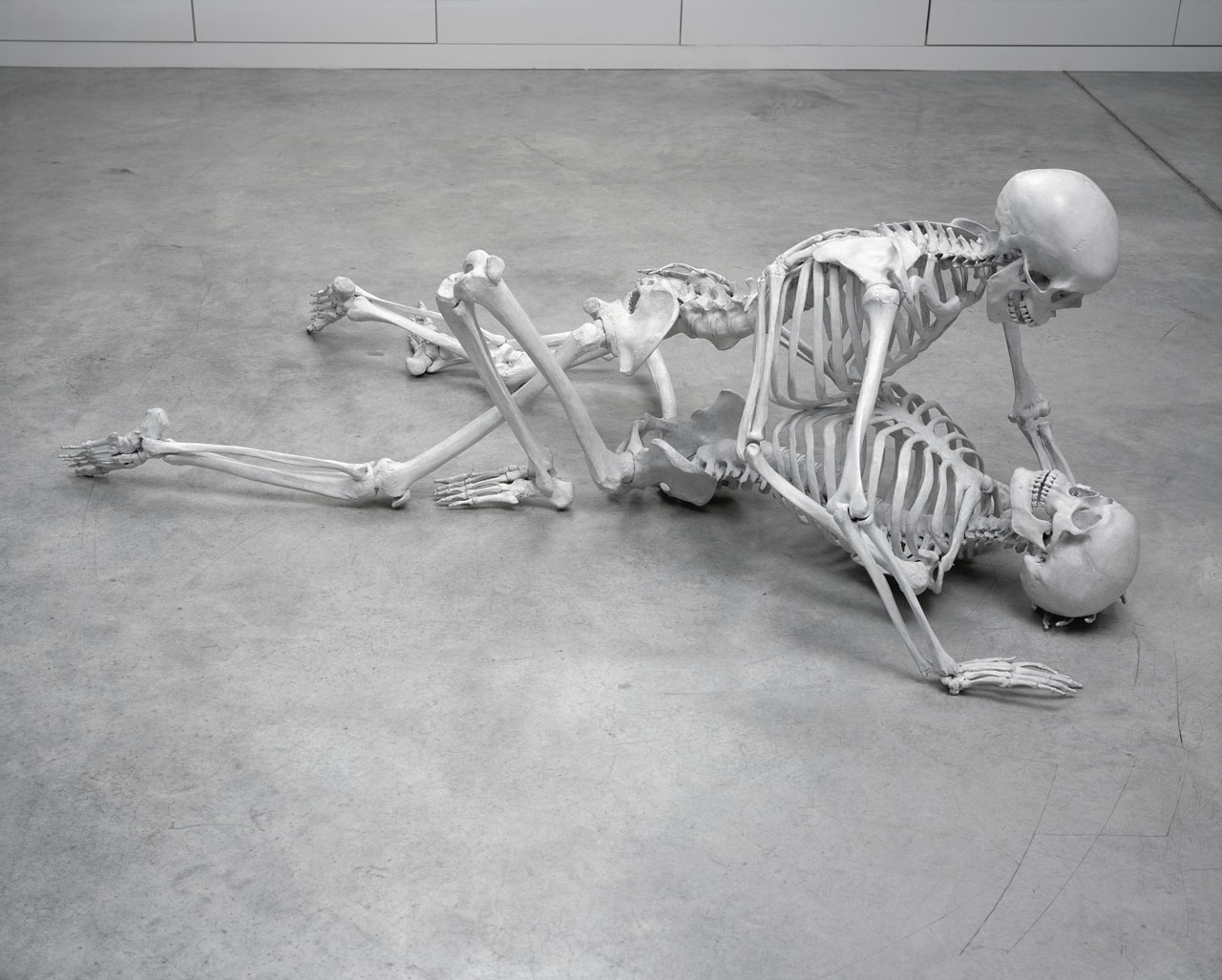
Foundation
Marc Quinn
October 5 → January 6, 2008
Gathering over forty recent works, DHC/ART’s inaugural exhibition by conceptual artist Marc Quinn is the largest ever mounted in North America and the artist’s first solo show in Canada
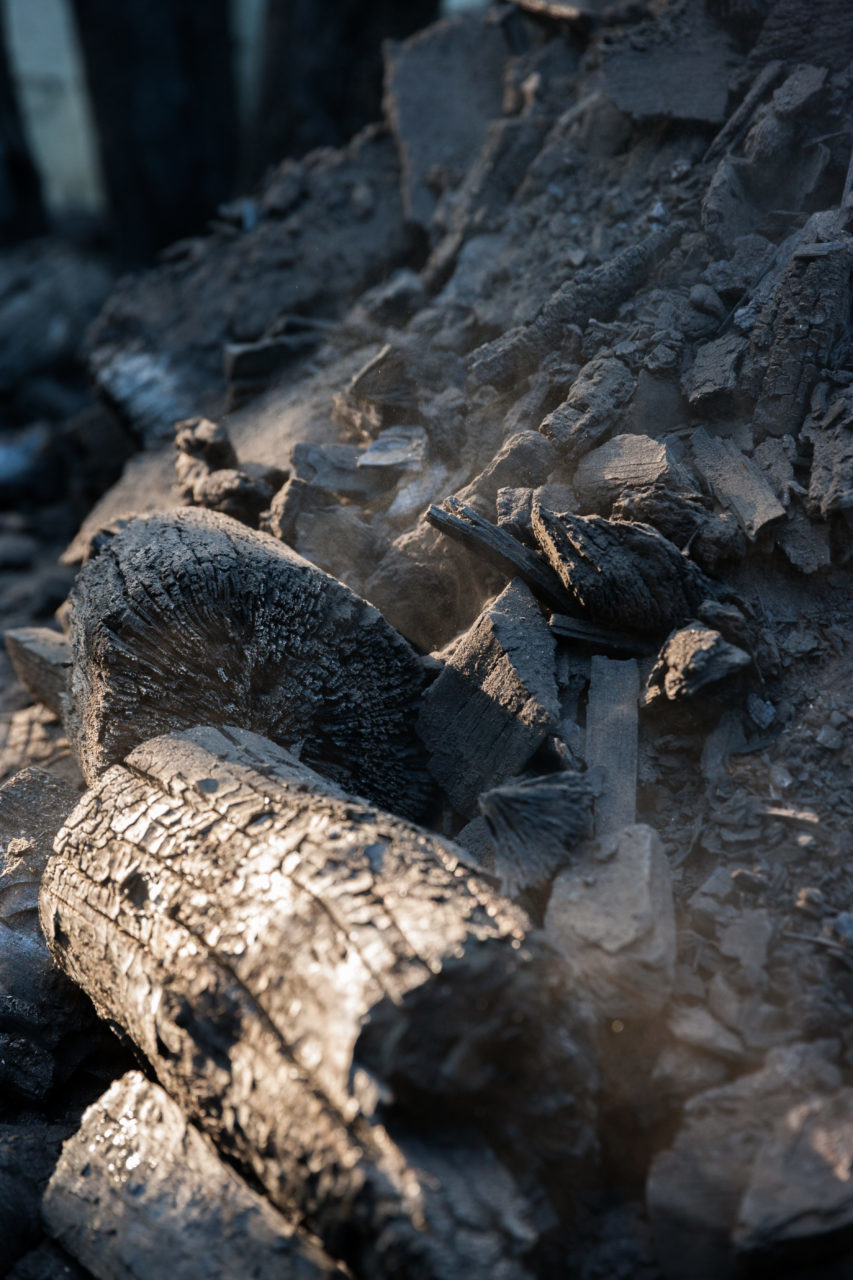
CHARCOAL
The artist is well-known for his use of charcoal, which is his chosen material due to its physical, symbolic, and spiritual qualities.
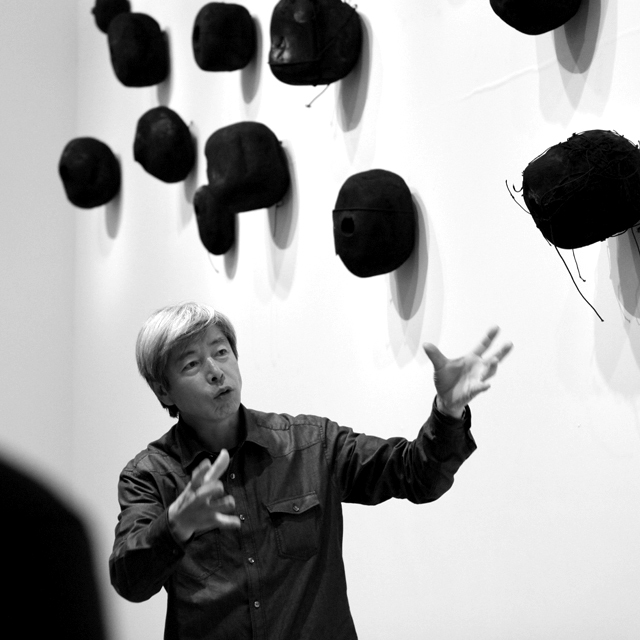
THE ARTIST
Of South Korean heritage, Lee Bae lives between Seoul and Paris and works in Paris. After arriving in France at the age of 33, Lee Bae rediscovered working with charcoal briquettes and other large chunks of charcoal. He realized that this material had a deep and rich connection to his Korean cultural identity. Charcoal allows Lee Bae to relive memories of soot-based China ink that is used in calligraphy, as well as various construction processes that he experienced as a child. In Korean tradition, when the foundations of a house are dug out, charcoal is the first material that is placed in the hole. This is done to sanitize the area and to protect the ground from humidity and insects. Charcoal is also used in Korea when a child is born: a piece of charcoal is tied to a string and hung on the front door to signal the arrival of a baby.
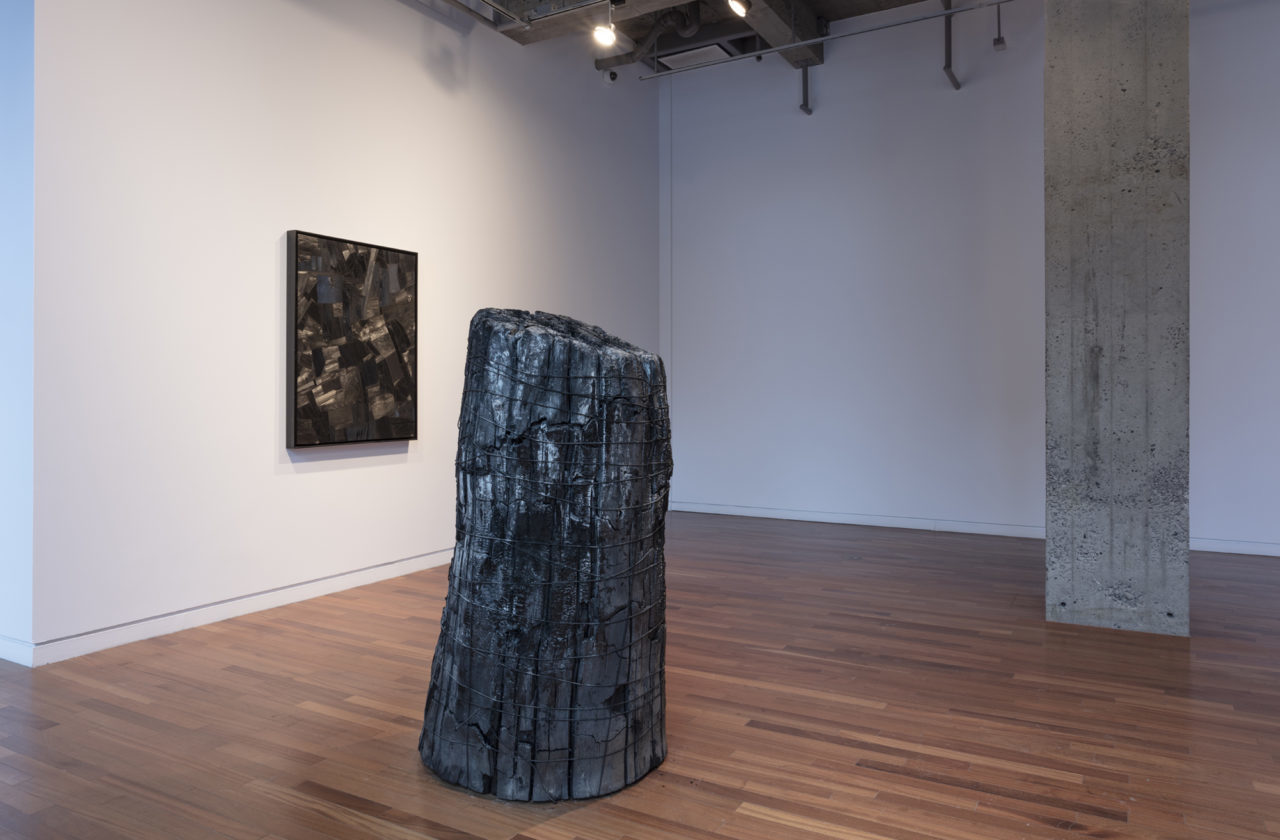
HIS PROCESS
This sculpture is part of a series entitled Issu du feu (“made of fire”), which includes a multitude of carbonized pine tree trunks that come from Lee Bae’s hometown. When in Cheongdo, the artist carefully selects each pine tree that will then be slowly burned over a two-week period in a large oven made specifically for this purpose. The trees become charred enough that they develop fissures and cracks, but not to the point where they dissolve into ash. Once cooled, Lee Bae places black elastic bands around the tree trunks in order to contain their carbonized form and to keep the charred bark in place. What remains is black matter that is in a state somewhere between integrity and volatility, solidity and impermanence, and that evokes the fragile equilibrium between destruction and rebirth.
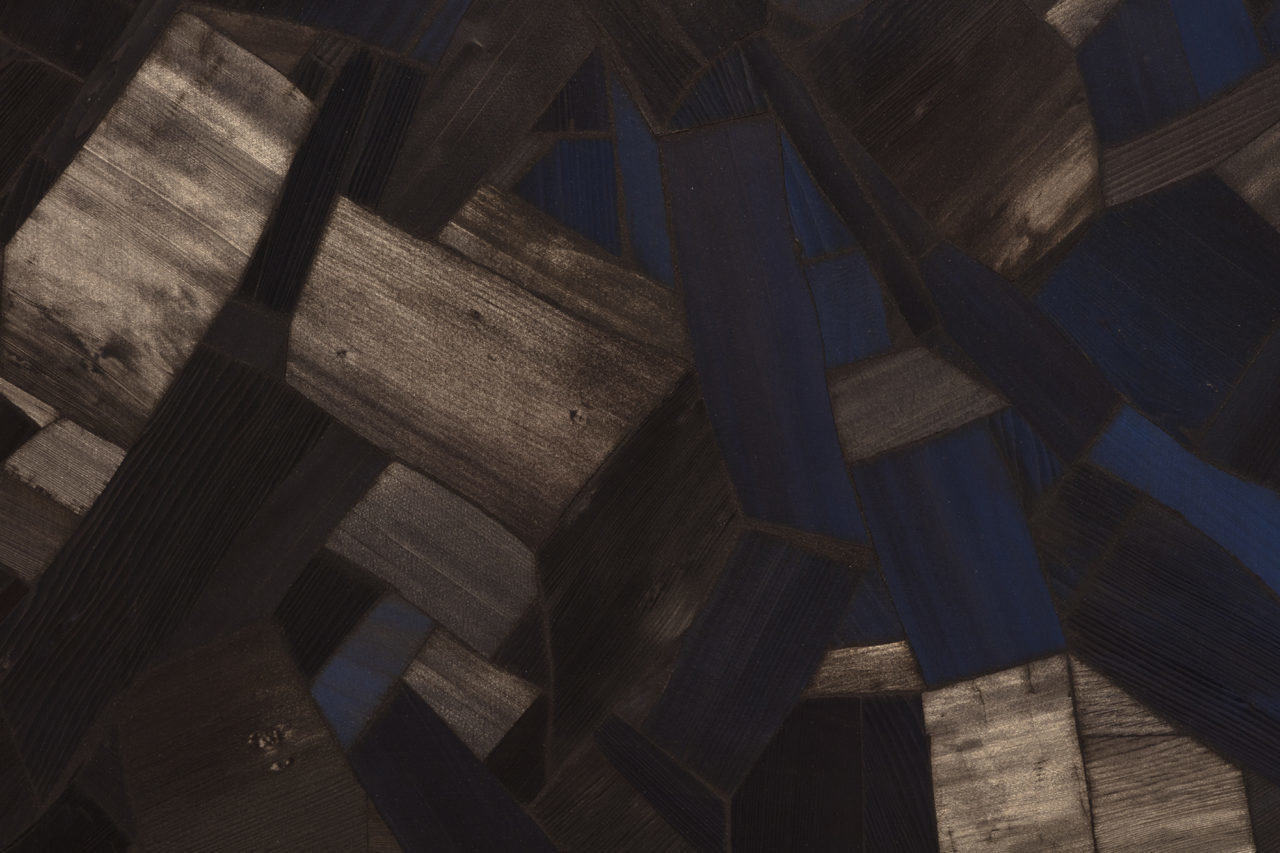
BLACK AND LIGHT
The two dimensional Issu du feu series illustrate the infinite nuances, textures, and densities of the colour black, which possesses a chromatic diversity that is very particular. Black contains all colours, it absorbs all colours. The works that comprise the Issu du feu series also reveal the luminous and shady properties of charcoal and the colour black, creating reflections and iridescence: a shimmering light that comes from darkness. These mosaics are created with shards and pieces of charcoal that are meticulously glued, compacted, pierced, and sanded down by the artist. This assemblage creates a constellation of fragmented bits of charcoal with numerous angles and cuts that absorb and refract light.
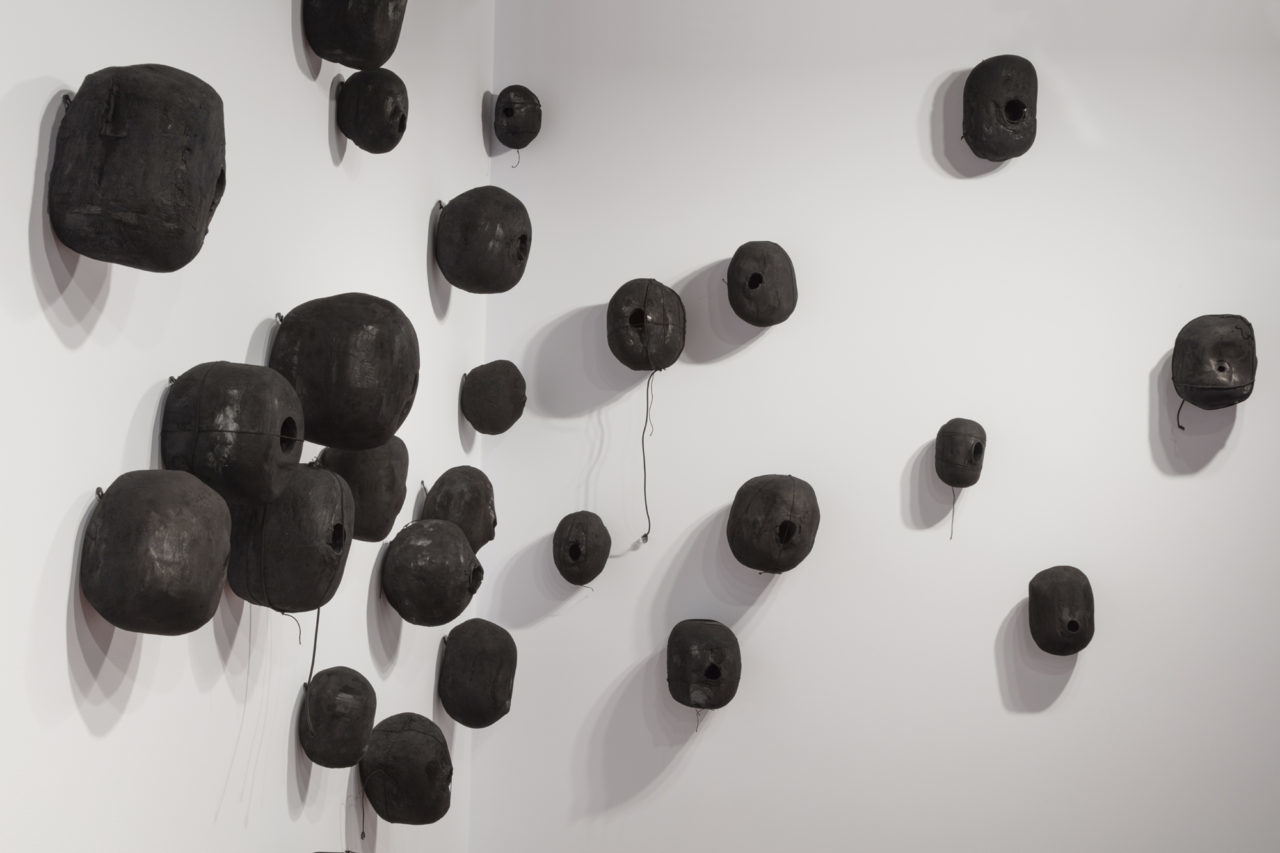
SENSORIAL MEMORY
Untitled consists of a multitude of small forms that are made with charcoal and presented on the wall. Bordering between abstraction and figuration, they are intriguing and mysterious. This work represents another way that Lee Bae engages with charcoal as a material that is linked to his memory. These small forms represent the persimmon, a fruit that is very common in his native village. Thus, these charcoal persimmons, and their distribution on the wall, represent childhood memories. The persimmon tree is evoked by the dispersal of small forms on the wall made of charcoal that recall the distribution of the fruit among the tree branches. The form of the persimmons on the wall could also be reminiscent of a swarm of bees, a group of birds in flight, or even a constellation. It is as if the persimmons, due to their rebirth through the charcoal, have been given a new momentum, a new energy.
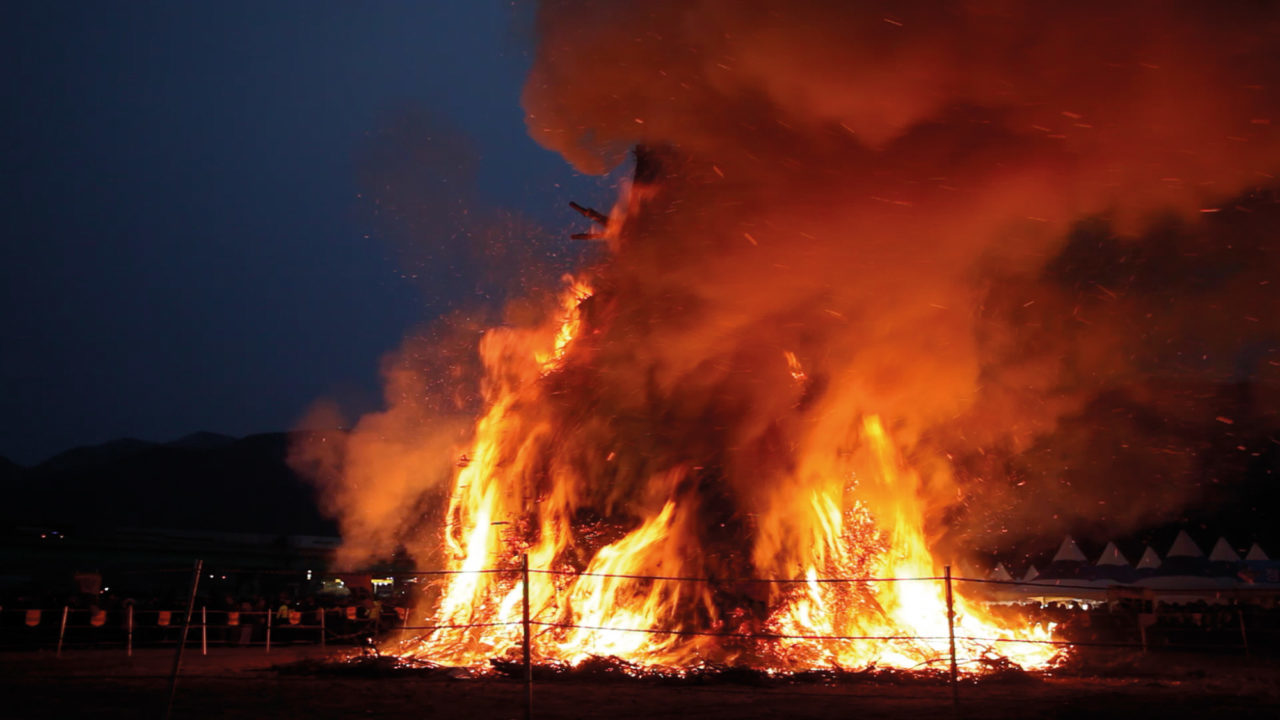
RITUAL
Lee Bae’s video work, titled Burning a house of moon, represents a traditional Korean ceremony that takes place on the night of the first full moon of the lunar calendar. There are many different versions of this ritual, unique to the various regions of the country. The one that Lee Bae speaks to is the ceremony performed in Cheongdo, his home village. The ritual involves creating a “Moon House” by gathering pine needles, branches, and pine wood and piling them into a stack that resembles a tent. Villagers then write their wishes on pieces of paper that they hang on the pine branches. When the moon rises, the house is set on fire, and the wishes rise toward the sky. It is through this process that wishes are believed to come true.
In the ancient times, the one way to pass on your message to the skies was through smoke. The using of smoke must have truly come from humanity’s common sensibility. They tried to communicate with nature and spiritual beings in that way. —Lee Bae
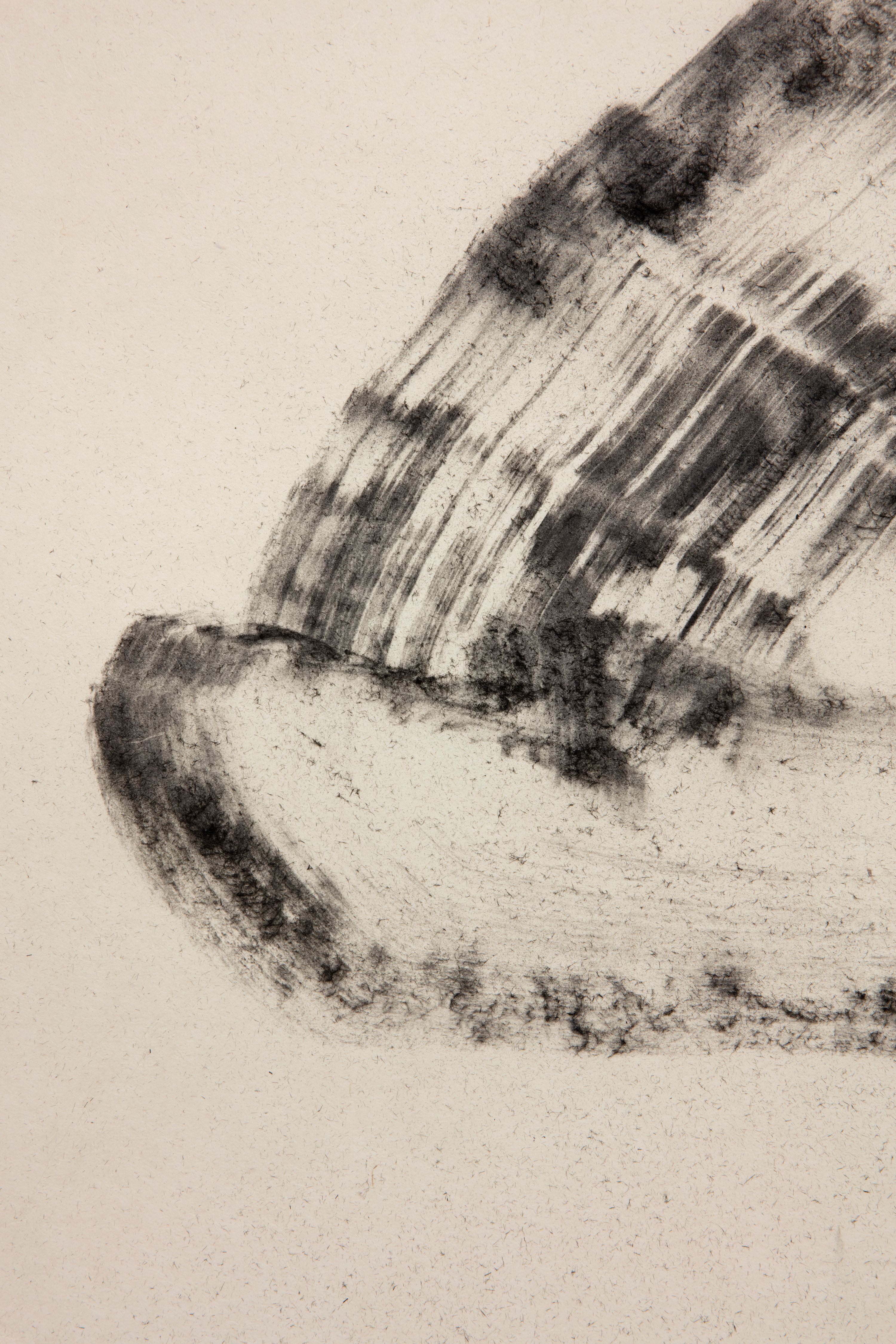
GESTURE
In the works Untitled, Lee Bae explores gestures and the traces they leave behind. The drawings are so vibrant that it seems as though Lee Bae created them in an improvised and spontaneous manner. But the gestures he makes and the marks he leaves on the paper are actually the fruits of rigorous research and many repetitions, gradually forming a choreography of sorts. Through this process, Lee Bae’s body is infused with the gestures until they become completely integrated.
We must not forget the importance of repetition, of the tirelessly repeated gestures in Korean culture. We enter into contemplation by repeating things, just like monks, philosophers, musicians. But despite this endless repetition, each interpretation is different. It is repetition that allows an artist to bring his creative universe to fruition. —Lee Bae
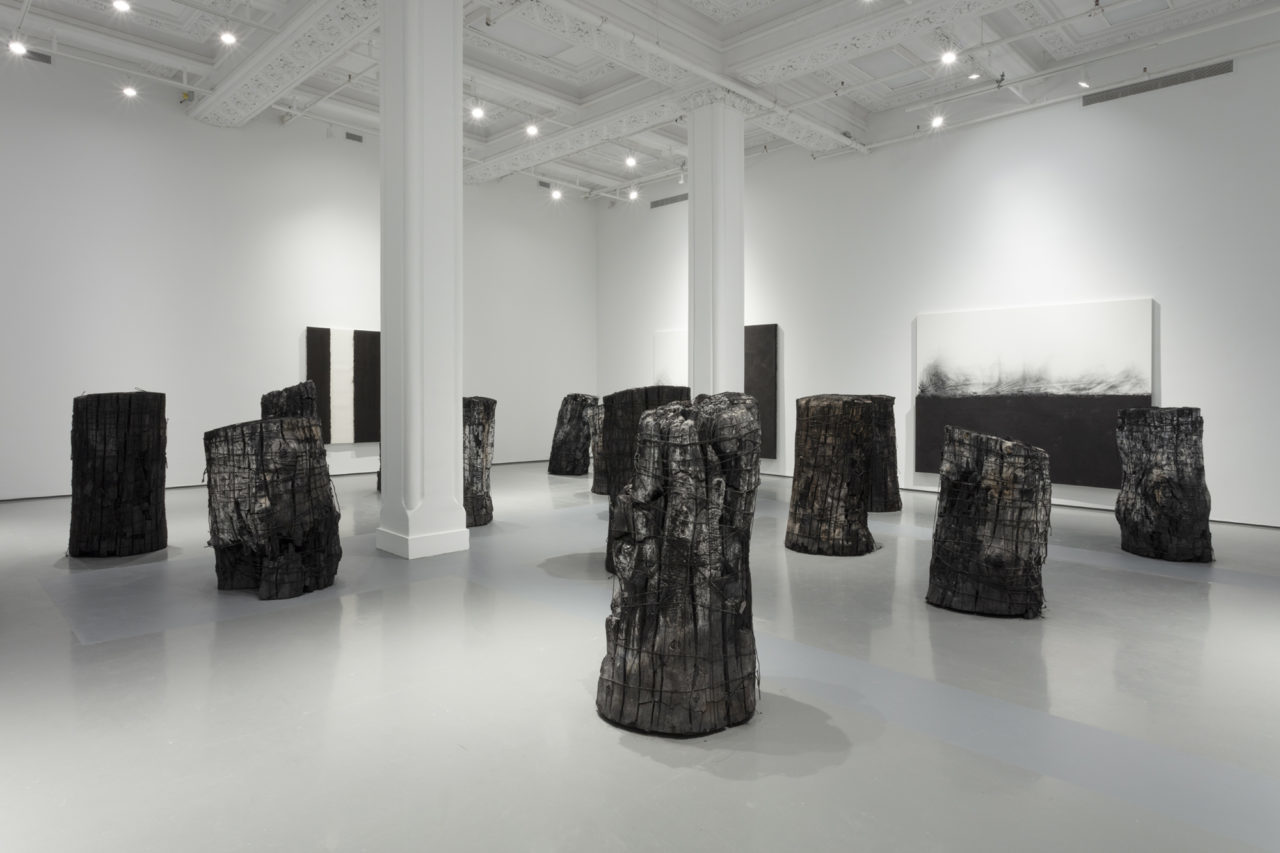
THE CYCLE OF LIFE AND DEATH
The exhibition spaces at 465 Saint-Jean Street hold a vast installation consisting of carbonized pine tree trunks from the Issu du feu series. The artist invites us for a contemplative walk through this incandescent forest, silent with cinders. This installation brings to the forefront the embodied nature of Lee Bae’s work, as well as a focus on an animistic understanding of our bodies and their connection to the environment. Charcoal is a material that pulsates with a primordial resonance as it is both made from fire and revives fire. This forest assists us in meditating upon the cycle of destruction and reanimation, of ashes and flames, of life and death. The cracked surfaces of the burnt pine tree trunks bring us into an intimate interconnectedness with nature: through our movements in between the carbonized trunks, our bodies and our spirits become submerged in this dialogue of reciprocity.
Author: Marie-Hélène Lemaire
Marie-Hélène Lemaire is Head of Education at PHI Foundation for Contemporary Art. She completed a Ph.D. in Communications Studies at Concordia University in 2015 that focused on developing a movement-based pedagogy for the guided group visit in contemporary art exhibitions. Using a feminist pedagogy of embodiment, new materialist and poetic inquiry approaches, she aims to privilege and validate somatic and affective engagements with contemporary art. She nurtures a poetic writing practice for developing, facilitating and interpreting curricula for guided visits. She is committed to epistemic justice in the arts.

Foundation
Gathering over forty recent works, DHC/ART’s inaugural exhibition by conceptual artist Marc Quinn is the largest ever mounted in North America and the artist’s first solo show in Canada
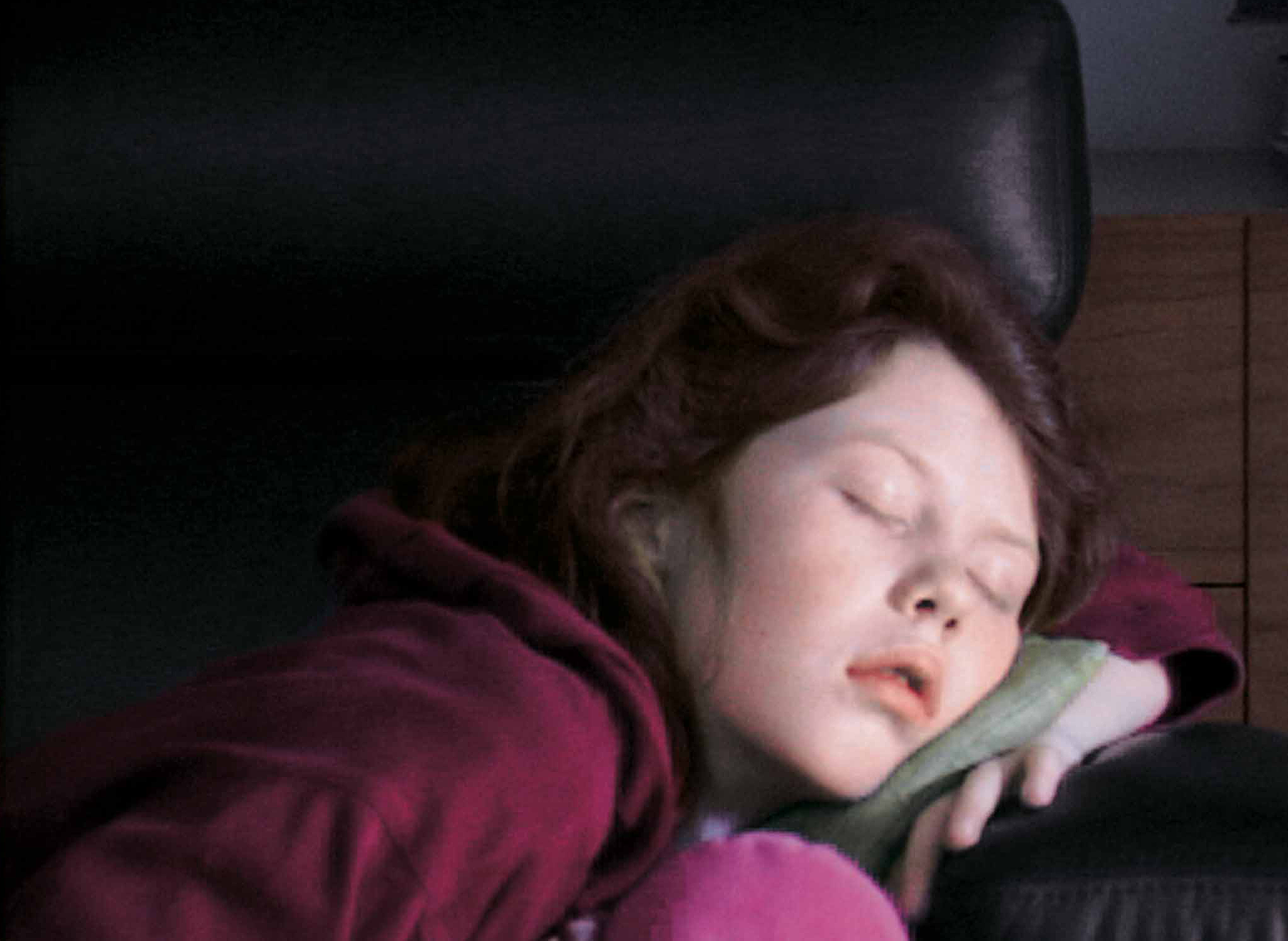
Foundation
Six artists present works that in some way critically re-stage films, media spectacles, popular culture and, in one case, private moments of daily life
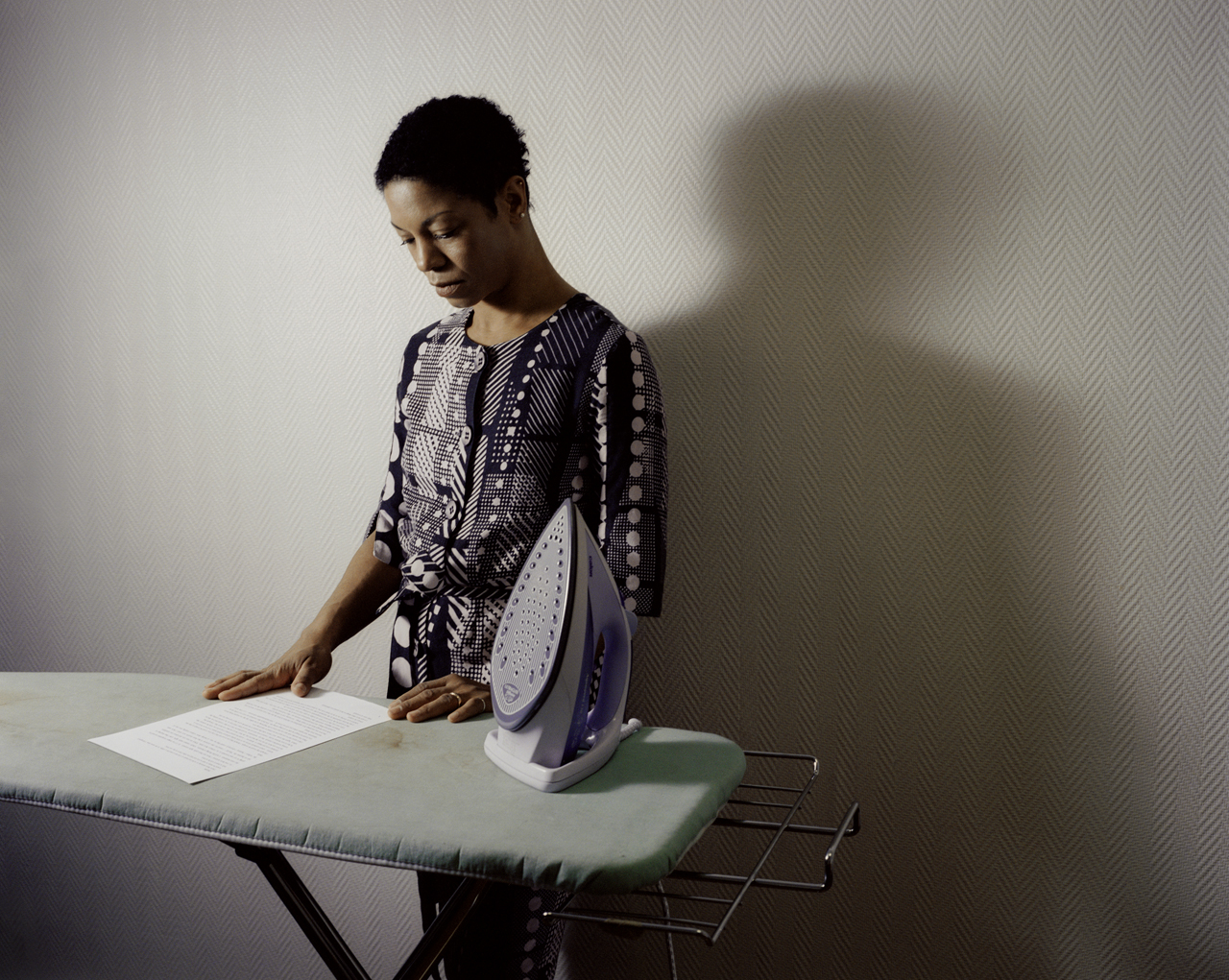
Foundation
This poetic and often touching project speaks to us all about our relation to the loved one
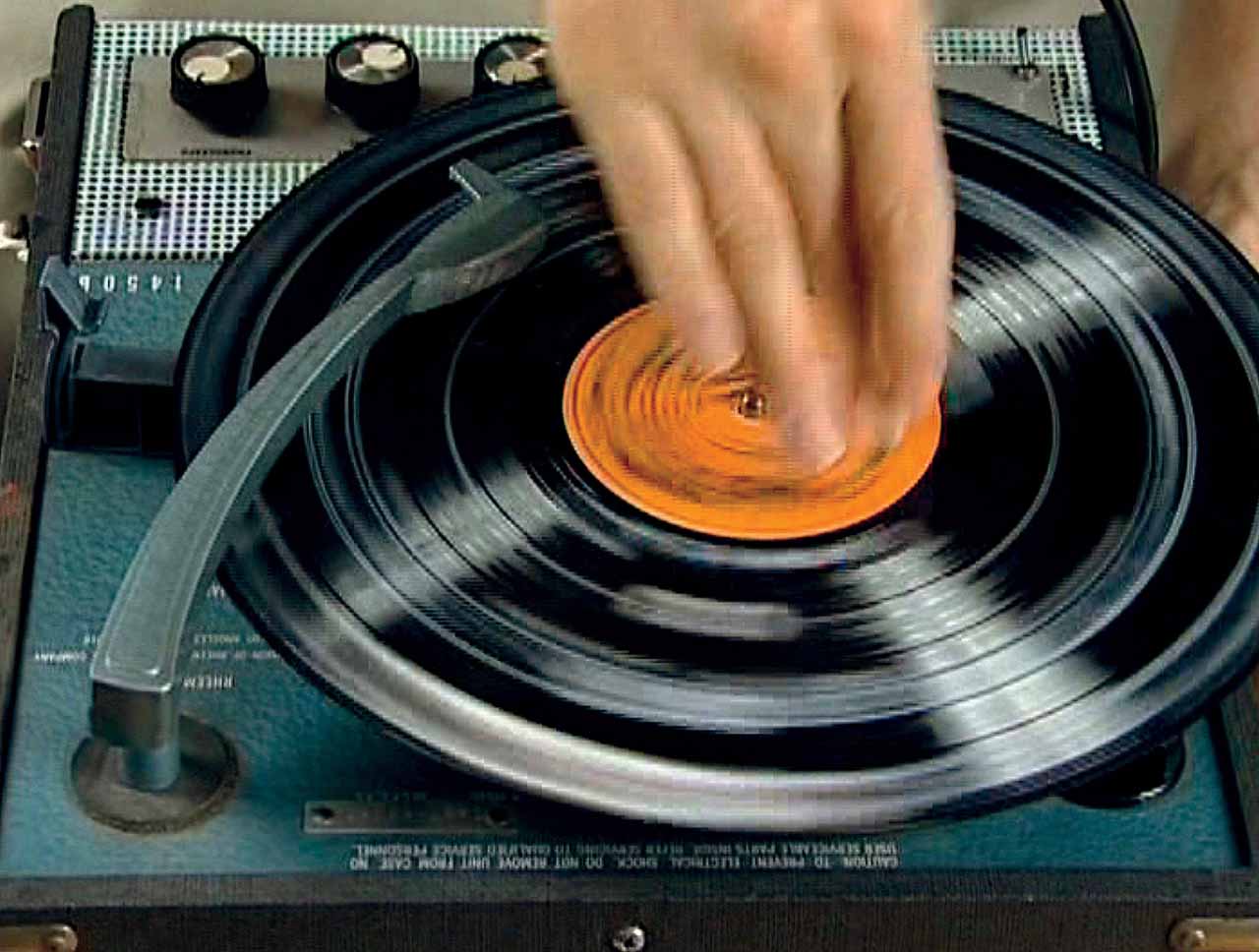
Foundation
DHC/ART Foundation for Contemporary Art is pleased to present the North American premiere of Christian Marclay’s Replay, a major exhibition gathering works in video by the internationally acclaimed artist
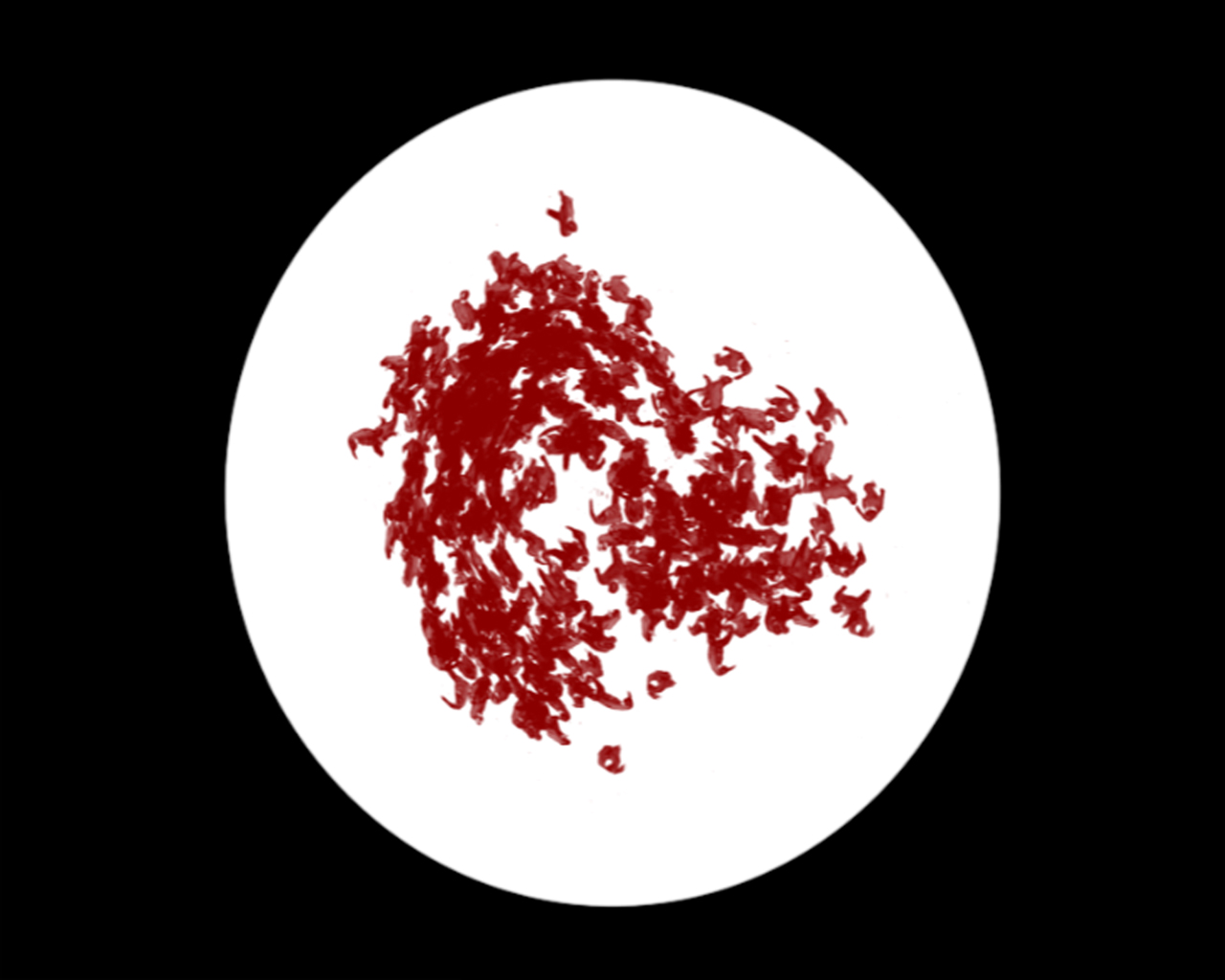
Foundation
DHC/ART is pleased to present Particles of Reality, the first solo exhibition in Canada of the celebrated Israeli artist Michal Rovner, who divides her time between New York City and a farm in Israel
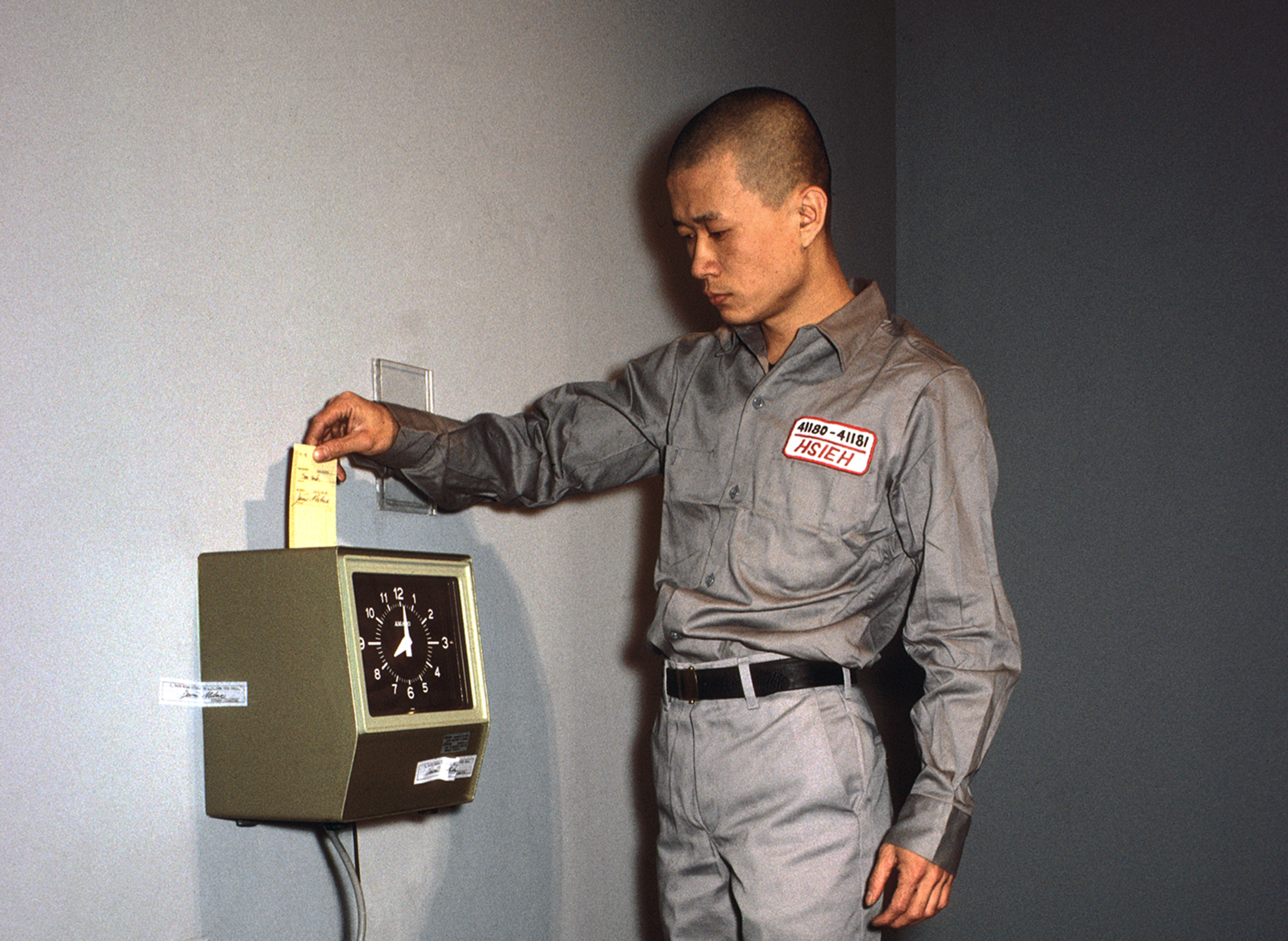
Foundation
The inaugural DHC Session exhibition, Living Time, brings together selected documentation of renowned Taiwanese-American performance artist Tehching Hsieh’s One Year Performances and the films of young Dutch artist, Guido van der Werve
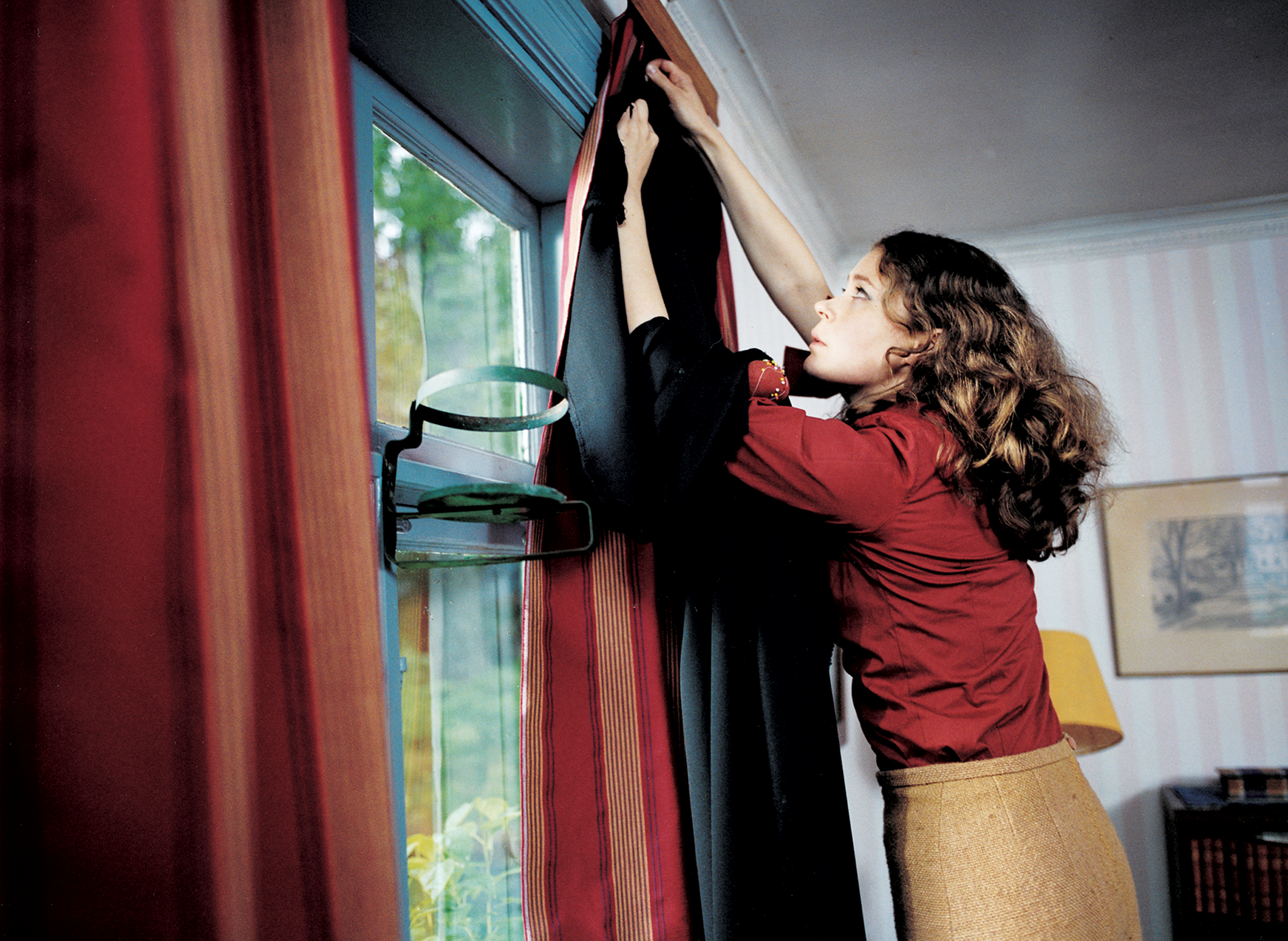
Foundation
Eija-Liisa Ahtila’s film installations experiment with narrative storytelling, creating extraordinary tales out of ordinary human experiences
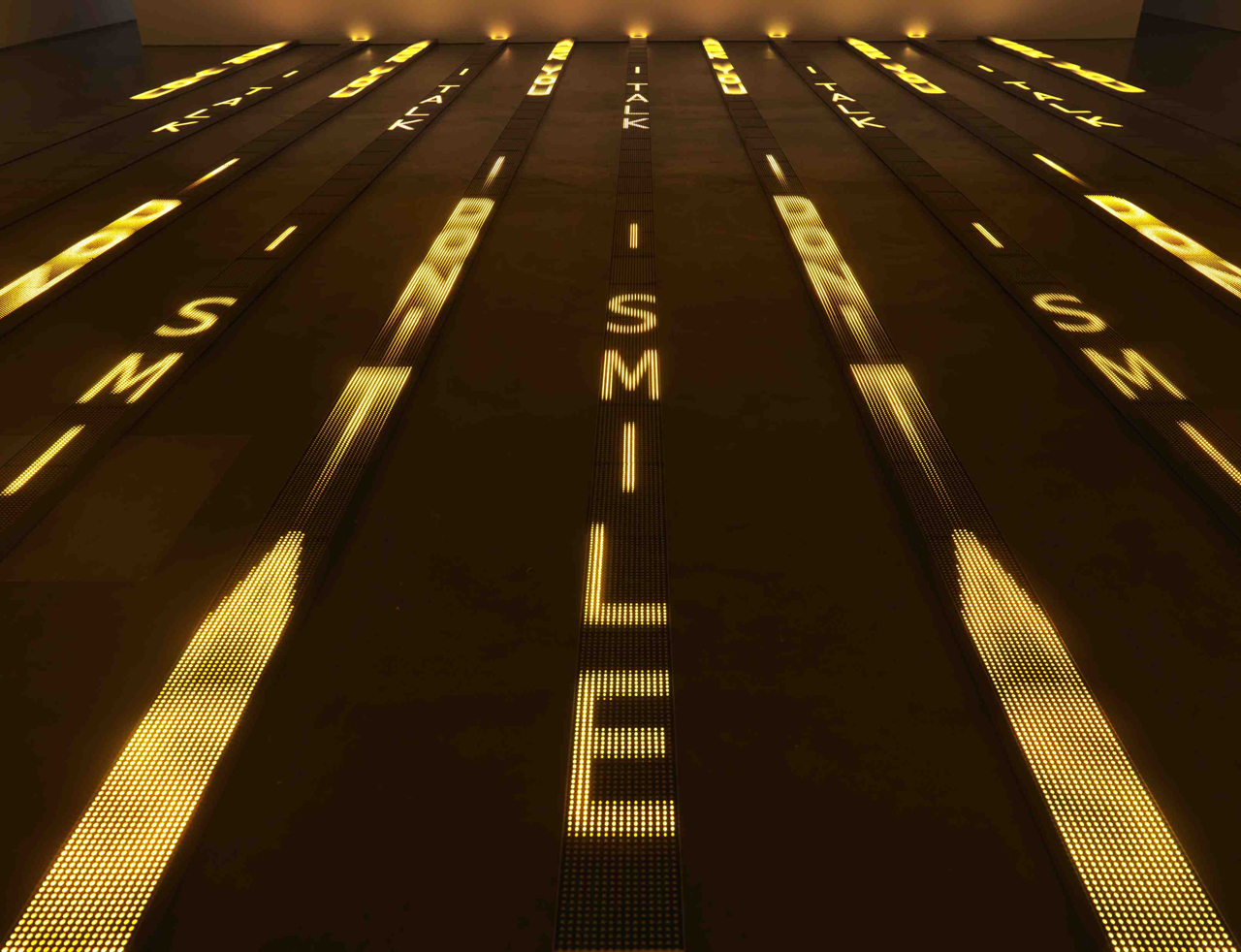
Foundation
For more than thirty years, Jenny Holzer’s work has paired text and installation to examine personal and social realities